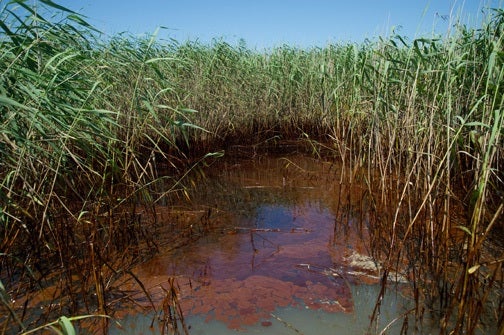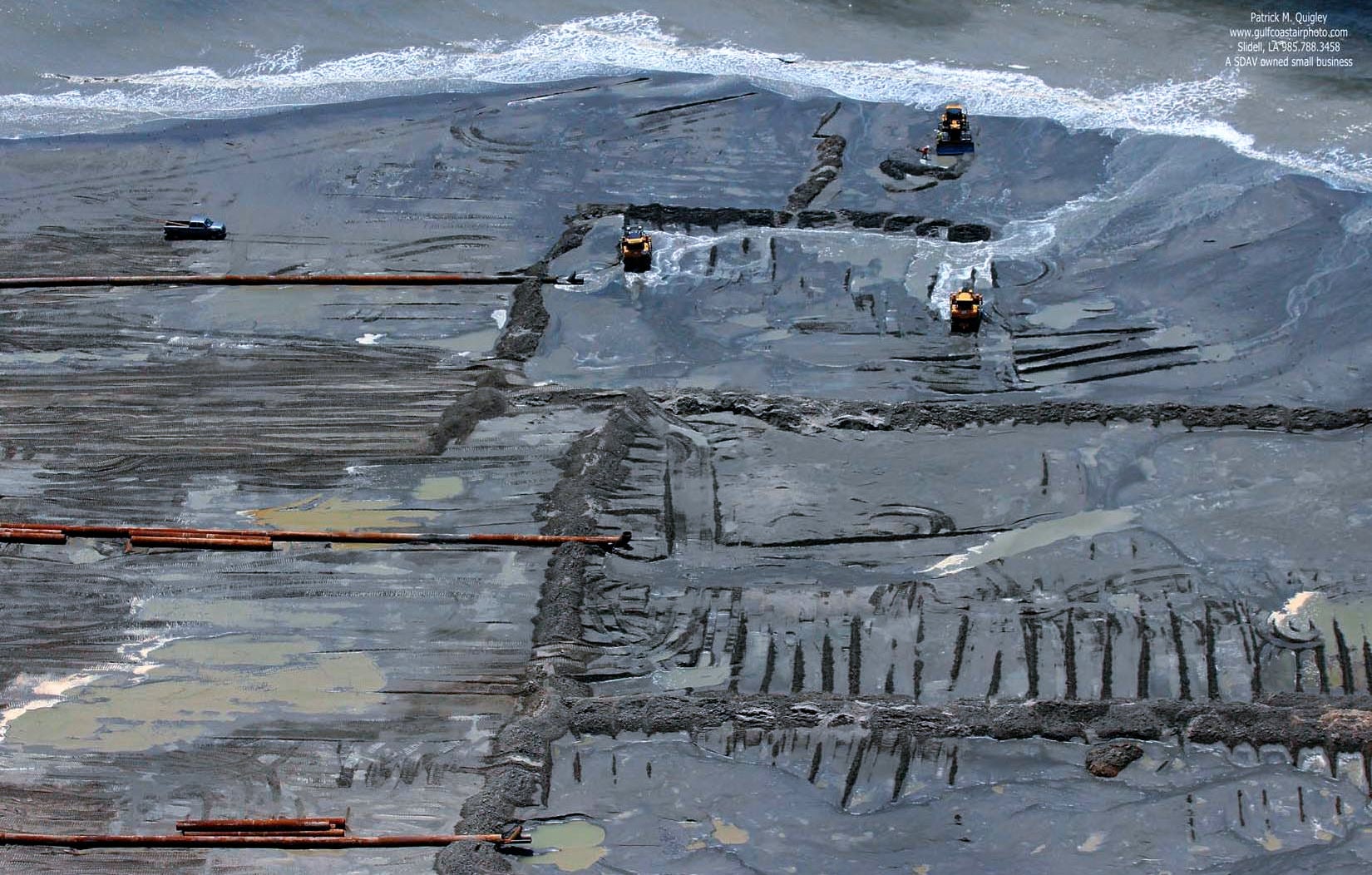Making the Most of an Unprecedented Opportunity: Funding Louisiana’s Coastal Program
By Charles Sutcliffe, Director of Policy and Programs, Office of the Governor: Coastal Activities
Funding a coastal protection and restoration program by first having to suffer through a catastrophe is an extremely painful and unsustainable way to work toward resilience. That being said, because of the disasters Louisiana has endured and thanks to the State’s widely-respected Coastal Master Plan, Louisiana has been entrusted with the financial resources, around $10 billion over the next 15 years, to implement a suite of the most significant projects in its $50 billion plan.

Oil from BP Deepwater Horizon spill on Cat Island
The majority of the funds, nearly $8 billion starting in 2010, have resulted from the Deepwater Horizon oil spill. From emergency and “early” restoration funding, to settlements by Anadarko, MOEX, Transocean, and finally the criminal, civil, and natural resources damages due to be paid by BP, Louisiana will be receiving large payments through 2032. Over that same period the state will also begin seeing much larger revenues from the Gulf of Mexico Security Act (GOMESA). These Outer Continental Shelf revenue sharing payments will contribute another $1.5 to $1.9 billion ($116-$140 million annually) toward crucial coastal projects depending on the fluctuations in the price of oil and the application of the federal formula.
Louisiana’s Coastal Protection and Restoration Authority (CPRA) translates this and other income into projects. As more revenues are made available, CPRA is able to implement more ambitious projects. Last year the CPRA was excited to complete its largest restoration project ever, the Caminada Headlands, a project that over two phases cost more than $200 million. Soon, CPRA hopes to be moving multiple projects with anticipated costs of over $300 million forward at once. While expensive, these projects are expected to provide landscape-scale benefits for the coast. Already moving ahead are major saltwater control projects along the Calcasieu Ship Channel in Cameron Parish and the Houma Navigation Canal in Terrebonne; thousands of acres of marsh and ridge restoration in the Terrebonne and Barataria Basins; barrier island and nesting island restoration; and two, long-studied sediment diversions along the Mississippi River.
But just because CPRA can match the projected price tags of these essential projects to a total anticipated dollar amount, complications still abound. On the revenue side, each oil-spill related funding stream has its own list of restricted uses, its own payout schedule, its own process for getting funding decisions approved, and finally, its own method for actually drawing down those dollars. On the project side, CPRA must determine which projects to build when, coordinate permitting and engineering and design timelines, and then factor in the length of construction to draw a map of the financial needs of the agency. Along the way these project schedules must be matched up with the cash flow to support them.

Caminada headlands beach and dune restoration. Credit: CPRA
CPRA’s project teams and engineers have been working extremely hard to make sure the agency’s plans match the availability of the income to support its project goals. However, CPRA is openly acknowledging that it does not have the right type of expertise in-house to fully consider the financial and economic aspects of its implementation plans. What are the options if project choices change, or if the cash flow and project expenditures don’t line up? When multiple large projects are in construction at once, can CPRA’s anticipated revenues keep up? What are the on-the-ground costs or benefits of moving projects around to fit the cash flow situation? Can GOMESA money be used in the short term to fill in gaps in that cash flow? Should the State bond out some of these revenues, if so, how much and when? Are the expenses of bonding worth the time gained by being able to build projects more quickly? Are there other financial tools, like environmental impact bonds, that should be utilized? Basically, can CPRA pay as it goes, or by utilizing the bond market or other types of debt issuance, can it achieve even more of its land building and flood reduction goals with the same level of investment?
Regional advocacy organization and Restore the Mississippi River Delta coalition partner, Restore or Retreat, is partnering with CPRA to find the financial and economic experts to help answer those questions and to provide the underlying strategy so this unprecedented funding opportunity is maximized for the benefit of the coast. The search for the right firm or team to lead this effort kicked off with a Statement of Interest and Qualifications last week and will be followed by an informational, pre-bid style meeting on August 17th at 10 a.m. at Greater New Orleans, Inc. in New Orleans.
One of the most crucial tests for Louisiana’s ability to shift from a reliance on disaster-related funding toward a more proactive, long-term funding approach is to show to its citizens and every potential funder that it can be a good steward of the funds it has already received. This means being transparent about its funding choices, translating those funds into projects whose results speak for themselves, and engaging financial experts when necessary to ensure that every dollar received creates maximum benefit for the coast.
The only thing worse than the Deepwater Horizon oil spill would be failing to make the most out of the revenues it has provided.